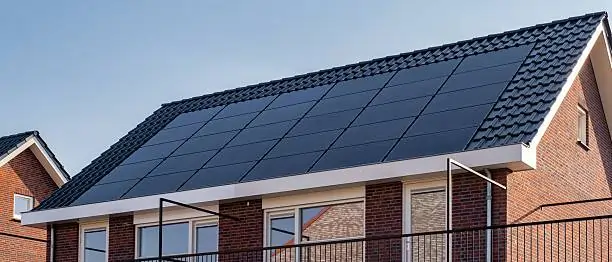Enhancing Solar Power System Efficiency: Proven Strategies
Introduction
Solar energy has quickly established itself as a linchpin in the global shift toward sustainability. With growing concerns surrounding climate change, energy security, and rising utility costs, solar power has become an attractive solution for businesses, homeowners, and municipalities. However, how this clean resource contributes to energy needs depends heavily on how efficiently it is harvested, stored, and used. For commercial and industrial operators, in particular, choosing solutions tailored to their unique requirements—like PV inverters and energy management for C&I—can dramatically influence the total energy harvested and utilized, impacting the bottom line and a company’s environmental footprint.
Optimizing a solar power system combines technical strategy and regular intervention. Factors such as environmental conditions, system design, and advancements in solar technologies all impact how much green energy your solar array provides over its lifespan. The following approaches help ensure solar projects deliver the greatest possible return on investment, increasing energy yield and system longevity. By systematically addressing common challenges and leveraging innovations, any solar array can achieve its highest productive potential and contribute meaningfully to the movement for sustainable energy.
Regular Maintenance and Cleaning
Routine maintenance is one of the simplest yet most effective methods to improve and preserve solar panel efficiency. Over time, outdoor installations inevitably collect layers of dust, pollen, bird droppings, and even small debris from nearby trees or construction work. Even in areas with minimal visible pollution, fine particulates can create a hazy film over the glass, gradually impeding light transmission. Research published by the National Renewable Energy Laboratory (NREL) demonstrates that panels left uncleaned may lose up to 30% of their energy output after just one month in dusty environments. Grime can accumulate even faster when solar panels are installed near factories, highways, or agricultural zones, making consistent cleaning an even bigger priority for maintaining output.
Establishing a cleaning schedule—preferably early morning or late afternoon when panels are cooler—ensures peak operating performance. Simple tools like soft brushes and deionized water can keep panels clear without damaging sensitive equipment. Specialized cleaning robots or professional cleaning services can be a wise investment for larger installations or panels that are difficult to access. Regular inspections for wear and tear, loose connections, or inverter issues are also vital for uninterrupted operation. Preventive maintenance can identify mounting issues or corrosion before they cause system failures or safety hazards, protecting your investment and the integrity of your solar power generation.
Optimal Panel Placement and Orientation
Solar panels’ physical orientation and angle play an outsized role in annual energy production. Solar panels must capture as much sunlight as possible throughout the year, orienting them to face the sun’s path. A south-facing direction is the general rule in the Northern Hemisphere, with an installation tilt matching the site’s latitude for optimal year-round performance. Adjusting tilt with seasonal changes can further refine generation—for example, increasing tilt during winter to better capture lower sun angles. In contrast, a flatter panel angle can boost output during the long summer days. Installing panels free from shade, including trees and nearby structures, throughout peak sunlight hours is also crucial, since even partial shading on one panel can reduce the output of an entire string of interconnected panels.
Designing your installation to maximize “solar window” time ensures you capture the most sunlight possible, regardless of geographic location. This includes accounting for rooftop obstacles, future tree growth, or neighboring development that might cast shadows.
Utilizing High-Efficiency Panels
The past decade has seen measurable advances in solar panel technology, with top-tier modules boasting efficiencies above 28%. This progress results from improved materials, such as PERC (Passivated Emitter and Rear Contact) cells, bifacial designs that capture light from both sides, and innovative anti-reflective coatings. High-efficiency panels generate more power per square foot than older models, making them ideal for limited roof space or sites with high energy demand. They are especially valuable in urban environments where rooftops are often small, or in commercial applications where maximizing every available inch of space is critical.
Upgrading or designing a new system with state-of-the-art panels means you can do more with less, maximizing output without increasing footprint or installation costs. Although these advanced panels typically carry a higher upfront price, the increased energy yield over time can result in lower overall costs per kilowatt-hour. That makes high-efficiency options an especially smart investment for organizations committed to long-term sustainability and optimal asset utilization.
Implementing Solar Trackers
Solar tracking systems automatically adjust panel positions to follow the sun’s trajectory across the sky, maximizing exposure throughout the day. Trackers can increase overall energy generation by 15%–25% compared to fixed installations. They are particularly effective in locations with open landscapes and consistent sun, where maximizing daily energy production creates measurable financial returns. While dual-axis trackers cost more upfront and require additional maintenance compared to fixed mounts, the energy yield benefits can outweigh these expenses, especially for commercial-scale projects or areas with high solar irradiance. Additionally, new tracker designs incorporate IoT connectivity for remote diagnostics and improved resilience against harsh weather, which helps reduce ongoing maintenance costs over the system’s lifetime.
Fixed vs. Tracking Systems
Fixed systems offer simplicity and lower maintenance, with fewer moving parts and thus fewer potential failure points. They remain the best choice for many homeowners and small businesses, particularly in locations where land is scarce or budgets are modest. Meanwhile, trackers provide a technological edge where land and capital allow. When weighing the decision, consider local climate, site constraints, and energy production goals.
Incorporating Energy Storage Solutions
Energy storage is critical for solar systems aiming for maximum independence and reliability. Without storage, any excess energy generated during the day cannot be used during night hours or cloudy periods, limiting the impact of your investment. Lithium-ion batteries are the industry standard, prized for their high charge/discharge efficiency, modularity, and continuously declining cost curves. Integrating energy storage allows solar arrays to feed energy into the grid or building loads during periods of high demand, low sunlight, or outages—helping to stabilize supply and mitigate volatility in electricity pricing.
By using smart controllers and energy management software, facility managers can dispatch stored solar power exactly when it’s needed, avoid peak rate penalties, and reduce dependence on fossil-fueled backup generators. As battery technologies evolve, new chemistries such as solid-state or flow batteries will further enhance the flexibility and safety of solar-plus-storage deployments for both small and large-scale applications.
Monitoring System Performance
Modern solar systems include intelligent monitoring tools that provide real-time insights into power generation and consumption. These platforms generate alerts for underperforming panels, inverter errors, or unexpected shading issues, enabling swift corrective action to avoid revenue loss or undetected downtime. Smart meters and cloud-based dashboards offer actionable analytics, empowering users to optimize consumption and forecast energy production more effectively. Beyond performance tracking, comprehensive monitoring can help identify patterns of energy waste and fine-tune system operation on a seasonal or even daily basis.
Analytics platforms also make it easier to quantify the benefits of efficiency upgrades or maintenance, helping you justify ongoing investments and track your system’s financial returns. This transparency is essential for reporting on sustainability goals and ensuring regulatory compliance in commercial projects.
Staying Informed on Technological Advancements
Solar power is an ever-evolving industry, with breakthroughs shaping performance and reliability. For instance, the emergence of perovskite solar cells promises to deliver even higher efficiencies in the coming years and could radically change system economics if they scale to mass production. Artificial intelligence is harnessed for predictive maintenance and production forecasting, while hybrid inverter technologies make integrating with storage and the grid more seamless. Even small improvements, such as enhanced racking materials or smarter wiring solutions, help boost energy yields and simplify installation or repairs.
To maximize system efficiency over the long term, it’s important to treat solar as a living asset, routinely revisiting best practices and incorporating reliable, proven advances as soon as they become available to the marketplace. This agile approach means your solar investment continues to deliver value not just today, but for decades.
Final Thoughts
Optimizing solar power system efficiency is a holistic process. It spans attention to site setup, panel choice, proactive maintenance, storage integration, and leveraging new technologies. Regular cleaning and smart placement remain fundamental, while adopting high-performance equipment and intelligent monitoring drive substantial returns. Staying current with the latest industry developments ensures operations remain sustainable and cost-effective, helping solar energy reach its true potential for businesses and communities. By remaining proactive and informed, stakeholders can maximize their energy output and the overall impact of their sustainability initiatives, paving the way for a greener and more resilient future powered by the sun.
Read more: Proven Strategies That Drive Organic Growth for SaaS Brands
Boost Your Business Workflow: How NetSuite Staffing Works – Answer The Folks
How to Rapidly Obtain and Evaluate Auto Shipping Quotations – Answer The Folks

